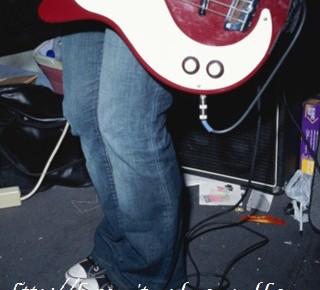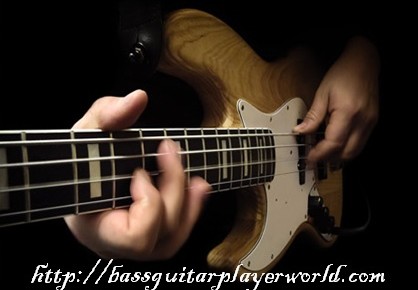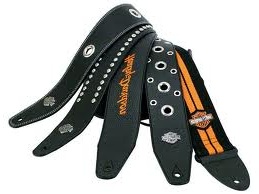Matching Chords With The Major Mode
 Understanding the different modes is one of the essential parts of music theory. Understanding the logic behind the different modes will improve your understanding of how music is constructed in general, but it will also help you when you will be composing guitar solos or even just riffs.
Understanding the different modes is one of the essential parts of music theory. Understanding the logic behind the different modes will improve your understanding of how music is constructed in general, but it will also help you when you will be composing guitar solos or even just riffs.
Before you start studying the different modes, you should have some basic understanding of different concepts in music theory. That is, it is very important that you know how major and minor scales are constructed and how they translate into intervals.
Also, you should be able to differentiate between augmented and diminished chords – I do not even mention a thorough understanding of what a triad or a seventh chord is.
A Quick Overview of the Origin of Different Modes
The origin of the different modes present in modern music theory can be traced back to Ancient Greek music theory. The presence of these modes is quite subtle in classical music, but their use in popular music is significant and jazz players would not even survive a gig without their profound knowledge.
Ancient Greek music theory had a theorem that argued that you can take a major scale and invert it so that every note in the original scale could function as the root note of the inverted scale. Using that pattern seven totally different melodic structures can be constructed.
In the table below you can see some of the rather common scales and their appropriate inversions. Also, you can see that the modes are named after ancient Greek tribes. The order of these modes inside a major scale is definite.
Ionian is always the first, Dorian is always the second, and it is always Locrian that closes the line. You can notice that the Ionian mode has the same root note as the original scale – that is, the scale that you have known until now as the “standard” major scale can also be called the Ionian mode or the “Ionian way of playing”.
| C major | G major | D major |
|---|---|---|
| C – Ionian | G – Ionian | D – Ionian |
| D – Dorian | A – Dorian | E – Dorian |
| E – Phrygian | B – Phrygian | F# – Phrygian |
| F – Lydian | C – Lydian | G – Lydian |
| G – Mixolydian | D – Mixolydian | A – Mixolydian |
| A – Aeolian | E – Aeolian | B – Aeolian |
| B – Locrian | F# – Locrian | C# – Locrian |
The Theory Behind Matching Chords to Modes
Understanding how the different modes are related to the different chords will make you able to play any style of music. Even though there are seven different modes altogether, there are only three that you are going to encounter every day.
For the major chords you can use Lydian, for the minor chords you can use Dorian and for the seventh chords you can use Mixolydian. It is important to realize that the character and the mood of these modes is what sets them apart, so in the table below I listed the appropriate moods for the three modes mentioned above and the classic Ionian mode.
| Mode | Mood |
|---|---|
| Ionian | Very clean, obvious sounds |
| Dorian | Varies from bluesy sadness to the cleanness of Ionian |
| Lydian | The cleanness of Ionian, but a little bit more mysterious |
| Mixolydian | Very easy on the ears, probably that is why it has been used in various folk pieces and popular music pieces as well |
If you would like to play in another mode than Ionian, the easiest route you could take is simply shifting the root note to the appropriate note. That is when the parent key is C, the root note for Dorian will be D, the root note for Lydian will be F and the root note for Mixolydian will be G.
Formulas for Chords Construction
Since the root notes are shifted, the distances between certain notes will be different: for that reason, the construction of chords in different modes will also be different. The table below shows the basic formulas for constructing chords in the four most important modes.
| Ionian | 1 | 2 | b3 | 4 | 5 | 6 | b7 |
| Dorian | 1 | 2 | 3 | 4 | 5 | 6 | 7 |
| Lydian | 1 | b2 | b3 | 4 | 5 | b6 | b7 |
| Mixolydian | 1 | 2 | 3 | 4 | 5 | 6 | b7 |
By interpreting the information in the table, we find out that a Dorian scale has a flat third and a flat seventh note, a Mixolydian also has a flat seventh, and so on. To put that into practice, we should compare the Ionian C triad: C-E-G with a Dorian C triad: C-D#-F#. For all the other chords, you can lean on the information presented in the tables above.
Fast Track Yourself to be a Master Bassist
Teach Me Bass Guitar is the most comprehensive, effective and entertaining program available anywhere outside of a major music school. Whether you are a new player or someone who had been playing for years, this course covers everything!
From basics to advanced techniques like slapping, to modes and essential theory, it is exactly what you need for success! For a limited time, get a WHOPPING 25% off the massive course…
Related Articles
Comments are closed.






